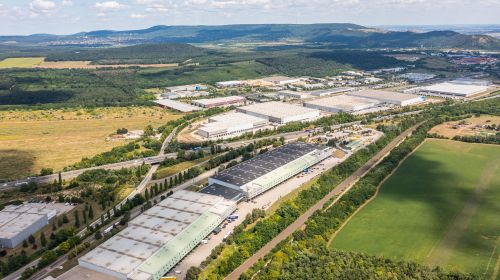Tune into the voice of... your employee
Interior DesignAccording to research by Colliers International, only 44 pct of employees use the space allotted to them. Some of these are field workers, some are working in conference rooms, in their clients' offices or from home. Bank of America has offered its employees the opportunity to work from home two days per week. To the management's surprise, a large percentage of all bank employees applied for the programme. As a result, there has been a considerable decrease in the demand for permanent work stations, because the bank's employees have been working overlapping shifts ever since. Telecommuting has become easier thanks to the latest technology. Vodafone has managed to reduce office space in the UK by 19 pct thanks to an increase in the number of conference rooms and the removal of dedicated desks and offices for upper management, replacing desktop computers with laptops, broadband with Wi-Fi and land lines with mobiles, among other measures. As a result of these changes, the company has lowered carbon dioxide emissions by 24,000 tonnes annually and reduced operational costs by GBP 11.5 mln in 2010/11 compared to 2006/07.
Generation Y wants offices
According to Hadley Dean, a managing partner of Colliers International, the workforce is currently going through a generational change at the moment. Contrary to their older colleagues, who want to escape from their offices at any cost, Generation Y enjoys coming into their company headquarters. However, they would like to work in smaller and less formal rooms, more adapted to the demands of the latest technologies. Ageing societies, such as the USA, are beginning to have different requirements as far as the quality and the functionality of offices are concerned. Rooms have now been created where office employees can leave their elderly parents in the care of qualified staff.
We like talking
The new generation of employees places special importance on communal areas, both conference rooms and refreshment rooms. Nowadays offices contain less closed space. As recently as 2010 separate rooms comprised 20 pct of offices, whereas today the figure stands at 9 pct, and in 2015 it will be a mere 5 pct, estimate experts from Colliers International.
If you want to know what your employees want, ask them. Maersk Line, a Danish company involved in container transportation, has come up with an unusual idea for its Poland headquarters. The company has decided to move to a bigger office because the previous one was too small and its lease was coming to an end. They are not moving far, just to a neighbouring building in the same office complex in Warsaw's Mokotów district, but the move was planned with a great deal of precision. The office area will increase from 848 sqm to over 1,130 sqm, but the interesting thing is that the 80 people employed in the new office will decide what it will look like. "We did not want to end up doing another routine move. We wanted to get all the employees involved in this. Each department chose one representative, who at the same time represented the department during the organisational meetings of the project group. The change of offices also became an opportunity to identify the needs of the employees and to implement solutions previously non-existent in our office," says Marko Mihajić, communications manager of Maersk Poland. The move is being coordinated by a seven-person team consisting of the company's employees from different departments who were ready to get involved in the project. The team's tasks include the coordination of the move and regular meetings aimed at setting priorities in relation to the functionality of the new office, the arrangement of space, collecting and communicating the suggestions and ideas of co-workers, and commenting on the particular stages of the project. "It is not the first time I have come across this kind of decision-making process during a project. It is the best method of creating your own working space, which will let you identify with the company and the design process. For an architect it means the opportunity to come face-to-face with a different view of space, and at the same time, with a new creative inspiration. The design process is still ongoing and we are taking on board different suggestions. We think that all of them are feasible," says interior designer Zbigniew Kostrzewa of In Design, which is designing this space. "We carried out a simple survey among our employees before choosing the new headquarters, says Marko Mihajić. "In the kitchen," he adds, "we put up a map where the employees marked their homes with safety pins. In this way we managed to limit the scope of our search for the new office in order to choose the most convenient location. We have also carried out surveys that let us see the way in which the staff perceived the current office. We took into consideration the ergonomics of work, the needs of particular departments in terms of communication between them, access to natural light, the demand for furniture and conference rooms, areas adapted for temporary work and quiet and recreational areas, among other things. We are keen that our new headquarters be both employee-friendly and elegant, and that they might boost the image of our brand."
A surveyed employee
The moving team's task is to listen to the voice of every employee. With this objective in mind, a survey was prepared where the employees rated what was the most important to them in the new office on a scale of 1 to 10. Access to natural light turned out to be a definite favourite. "Every workplace will have access to natural light. We have chosen an open space option. We have given up on separate offices for managers, but increased the number of conference rooms to 12. Every department will have its own designated conference room for department meetings. General access rooms have also been designed for meetings with customers. Communal rooms are going to be designed in such a way to allow optimum access to natural light," says Joanna Jurewicz, the head of Maersk Poland's team responsible for the move. Other important points that came out of the survey include places for work where one can concentrate, the possibility of gaining access to conference rooms in a short time, proximity to co-workers, places for informal meetings and for confidential telephone conversations, and temporary storage space. ?It is the employees that decide if an office is ideal. They are the most important element during the office's creation. An ideal office should be comfortable, inspiring and practical," emphasises Zbigniew Kostrzewa.
The new Maersk office is practically all open space. However, its ten conference rooms, large canteen, refreshment room and games room (where employees will probably be able to play foosball) are to play an important part. In line with Scandinavian custom, all office employees will be able to use the boss's office during his or her absence. Such a scheme already exists, for example, in IKEA group companies. Employees often working in the field will have access to so-called ?hot desks', which will be available to them when they are in the office, and Wi-Fi will enable them to perform their duties anywhere, even in the canteen. Is this the form of the office of the future? And is it much different from how offices have been operating for a few years now?





















































